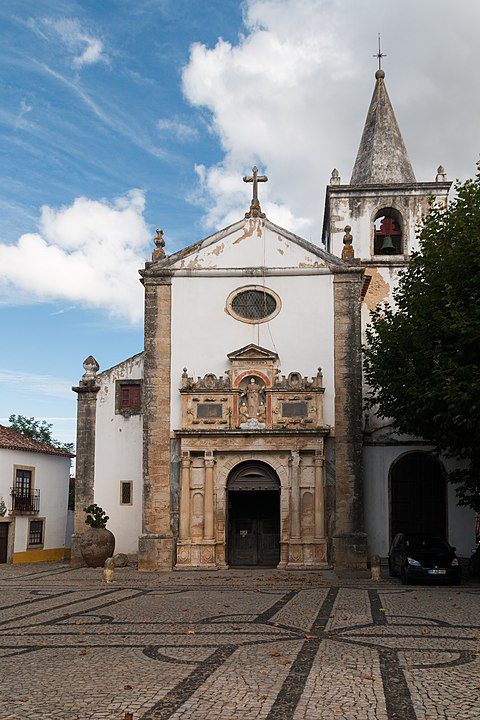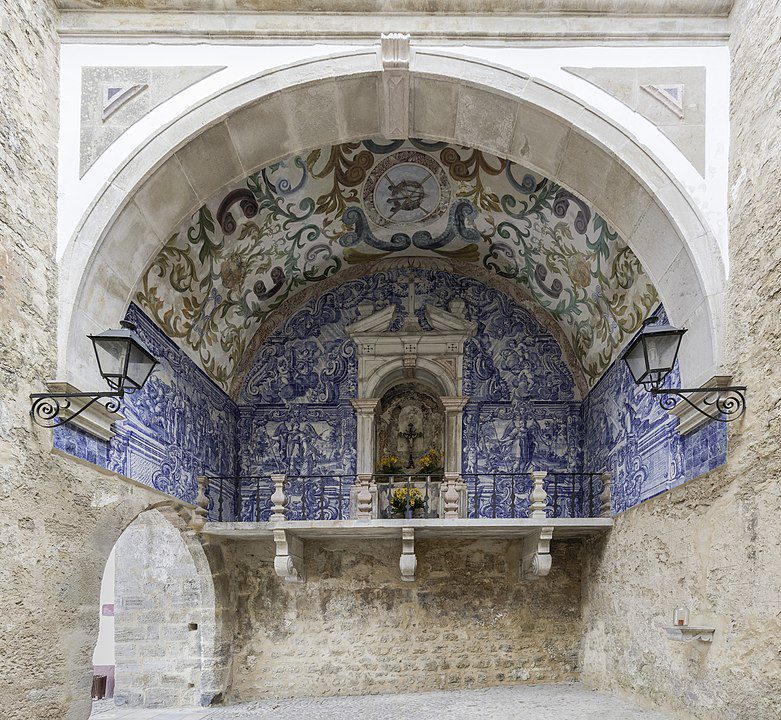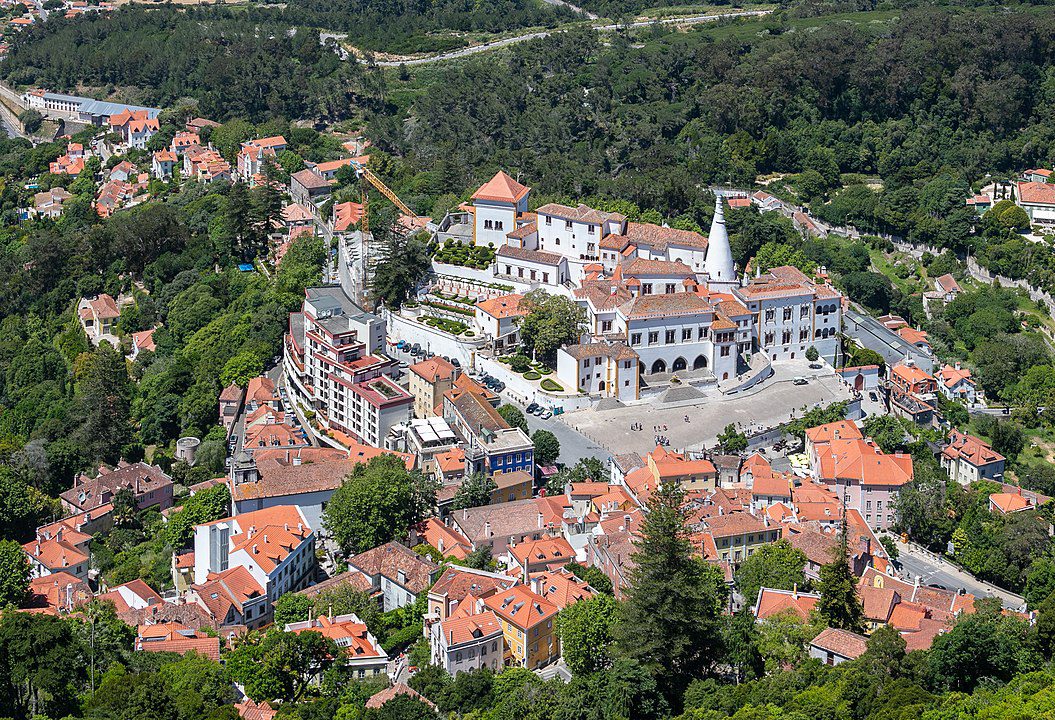
Sintra and Obidos, two towns that are a short drive from Lisbon, make perfect places for short trips from Lisbon; maybe even for a day trip or two. These towns are known for their castles and palaces, luxurious homes, & medieval vibes. Here are the top 10 things to do in Sintra and Obidos!
1. Walk up to the Castelo dos Mouros

One of the oldest castles in Sintra is the Castelo dos Mouros or the Castle of Moors. Sitting high up in the mountains in the northern part of town, the Castle of the Moors literally looks down on Sintra and its other noted castles & homes. Visiting this castle is one of the most popular things to do in Sintra and Obidos.
The castle and its wall can be seen from several parts of the town too. Hike up to the castle and you can see some square towers, battlements, a chapel that used to be a mosque, the south tower, and some sweeping views.
Castelo dos Mouros was built by the Moors and is said to date back to the 8th & 9th centuries. However, some parts of it were later extensions and yet other parts were rebuilt at a later time. The wall was built under King Ferdinand.
2. Have some fun at Quinta da Regaleira

Another impressive structure here in Sintra is Quinta da Regaleira or the Palace of Monteiro the Millionaire, a reference to its wealthy owner. António Augusto Carvalho Monteiro — whose family had made a lot of money from some businesses, decided to put his money to use in the building of a unique home.
António Augusto Carvalho Monteiro’s palace was built to impress as well as confuse anybody who might visit it. It has several smaller monuments in it as well as things like a tower, grottos, tunnels, and most importantly an initiation well, which is said to have been used for rituals.
While you’re there make sure to tour the interiors of the palace, go to the top of the Regaleira Tower, and stroll through the gardens of Quinta da Regaleira.
3. Enjoy the colors of Pena Palace

Yet another Palace in Sintra and Obidos that attracts visitors to town is Pena Palace. This one is a colorful one! The architectural features on it are very impressive, too. It’s considered one of Portugal’s seven wonders and it’s one of the most visited spots in Sintra.
Pena Palace stands on a hill in the Sintra mountains where an ancient monastery once stood. The monastery was destroyed during the earthquake of 1755. The colorful Palácio da Pena was built in 1839 for King Ferdinand II who wanted to have a summer palace here.
Also known as the National Palace of Pena, this grand structure is a coming together of different styles of architecture from Moorish to Renaissance. Visit here and you’ll see stucco work, murals, and even panoramic views from its outdoors.
4. Visit Sintra National Palace

One other palace you cannot leave without seeing is the Sintra National Palace. And the reason you should see it is because it’s the oldest palace in Sintra, and this was the official residence of the royal family of Portugal. It’s also believed to be the place where the Royal family lived for the longest time. That’s not all. It’s said to be the best preserved of all the castles in Sintra too.
Also called the Town Palace, Sintra National Palace can be spotted from afar thanks to its tall chimneys that stand out of the landscape like two giant cones.
The interiors of the palace are grand too with ornate ceilings, some walls covered in blue tiles, & a chapel.
The Sintra Palace was built in parts over a few centuries as many of the rulers of Portugal wanted to modify and expand the royal dwelling. The Palace ended up having features that represent different styles of architecture from Gothic to Renaissance & Manueline.
5. Drive out to Cabo da Roca
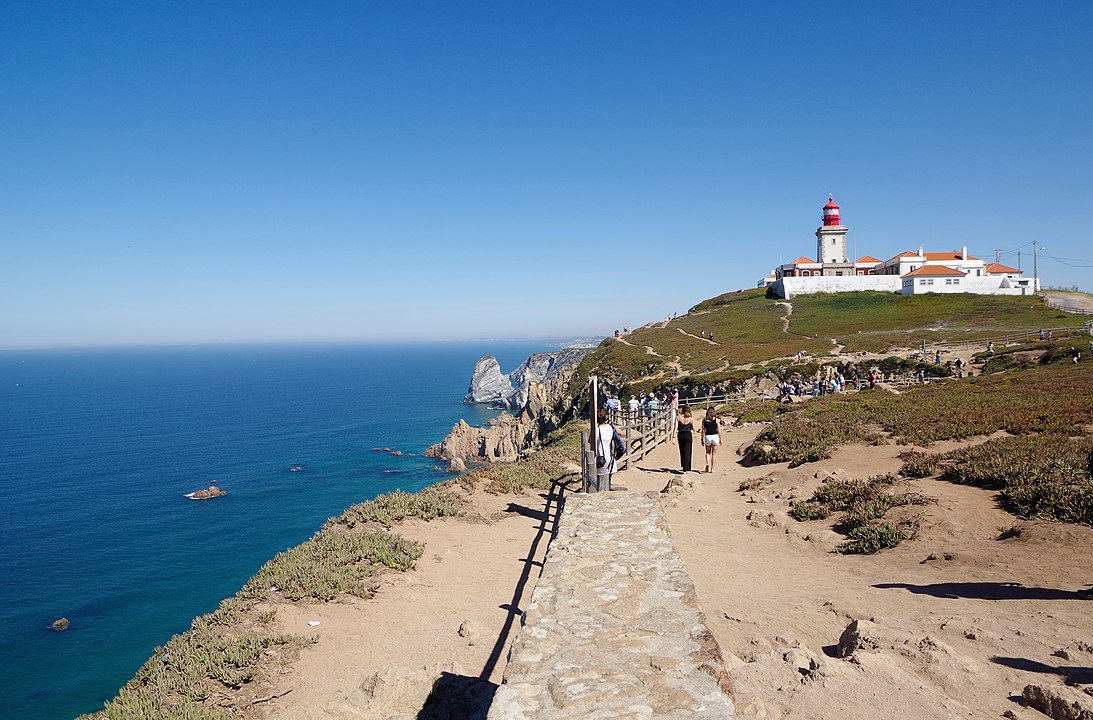
It’s true that the palaces are the biggest draws in the town and most popular things to do in Sintra and Obidos. However, Sintra is close to the coast too. You could drive towards Cabo da Roca, which is also known to be the westernmost part of Mainland Europe.
Situated on a granite cliff and looking out into the Atlantic Ocean, Cabo da Roca comes with some great coastal views and is a good place to watch the sunset. On it is also a lighthouse that was built in 1842.
When you’re in the area you might also want to go down to the beaches around there.
6. Walk along Obidos’s wall and see the castle
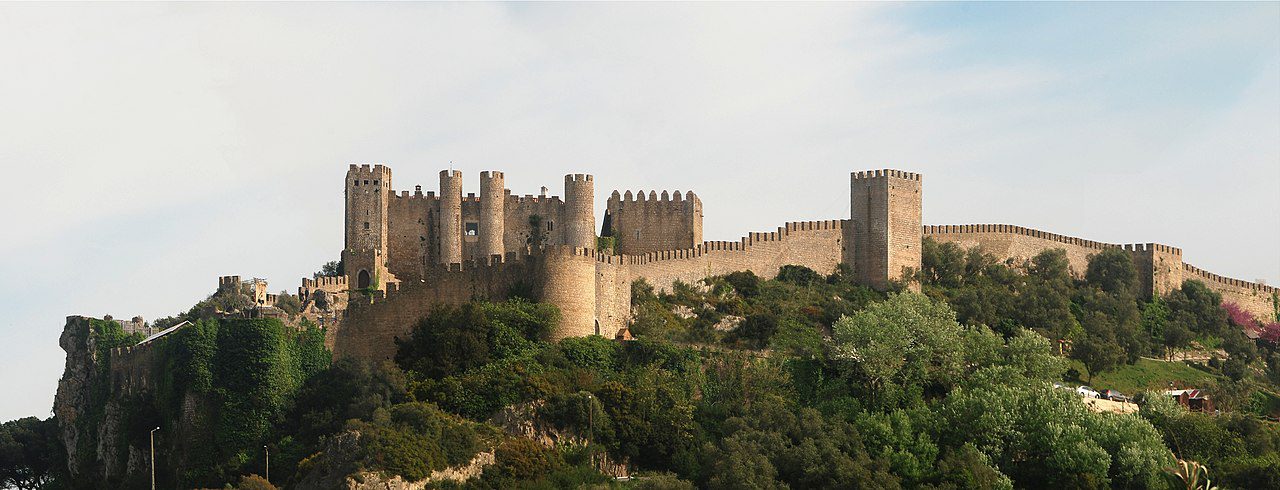
The Óbidos Castle was built by the Moors in the 700s or so but it seems to have had changes & additions made to it in the centuries that followed. This castle is another of those well-preserved areas in the country and has also been counted as one of the 7 wonders of Portugal. Now, if you’d like to see the insides of this castle you’re going to have to be booked into the heritage hotel it is now.
And when you’re in the fortified town of Obidos, the first things that are most probably going to catch your eyes are the wall that surrounds the city and the Óbidos Castle. It’s one of the major attractions of this town. You can actually walk the whole stretch of the wall and it’s a great way to see Óbidos as you can see all the whitewashed buildings of the town, the churches, the cobblestone streets, even the aqueduct and the farms & wineries in the distance.
7. Check out the Historic Churches
Óbidos is home to a lot of churches. While you can see them from the wall, you might want to step into a couple or more of them and see what they hold. Some of the more popular ones are: Igreja de Santa Maria & Santuario do senhor Jesus da Pedra.
Igreja de Santa Maria is the church in the main square of the town, and this was the one that was set up as soon as the king recaptured the town from the Moors in 1148. The original church met with destruction during the earthquake. You can step into the reconstructed one that stands in the main square and see the tiles from the 1700s that adorn it. Also look for the tombs, paintings, & wooden decorations this church is known for.
You might also want to visit the hexagonal Santuario do Senhor Jesus da Pedra and learn about its history & the story behind its cross.
Then there’s Igreja-Livraria de Santiago, which is a church that’s turned into a bookstore, and the 1498 Igreja da Misericórdia, which is often used for local cultural happenings.
8. Explore Historic Obidos
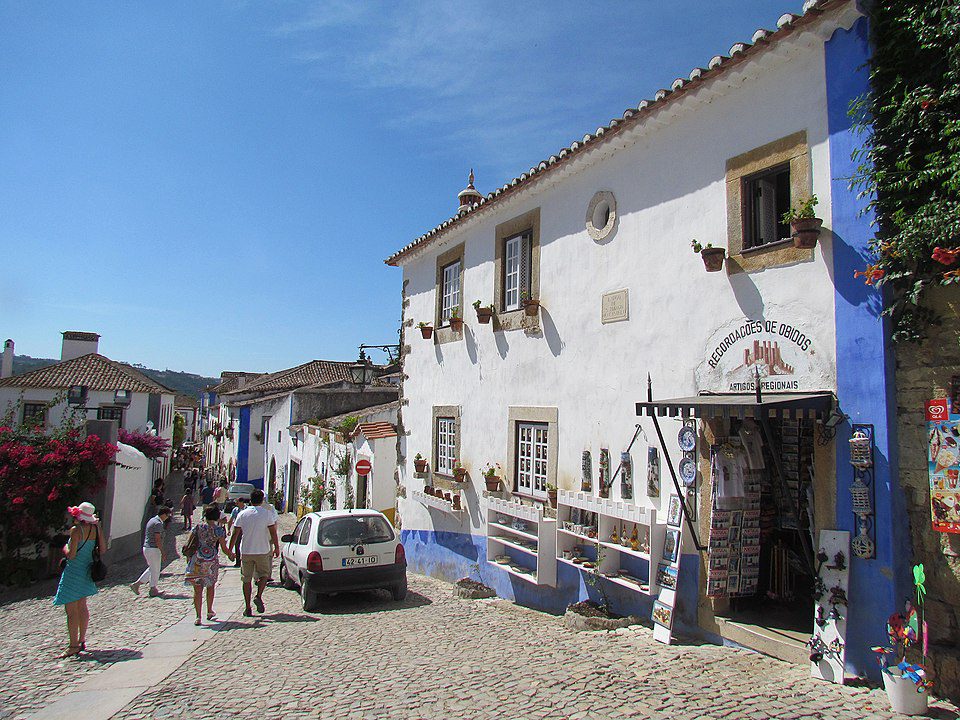
As you walk through the cobbled main street of Historic Obidos, you can step into the restaurants there and also pick up some souvenirs from the many small shops that line it. Another must-do is to stop at the Jinjinha joints around town and gulp down a few shots of the cherry liqueur that’s served in chocolate cups.
You’ll be passing the main square and 16th-century Santa Maria Church. If you’d like to go see what they’ve got in the Municipal Museum, that’s also here along Rua Direita. This town is one of the most popular places to visit in Sintra and Obidos.
9. Make a stop at Porta Da Vila
When you walk down the main street of the town, you’ll see Porta Da Vila, Obidos’s South Gate, which is actually the main gate of the town. Make sure to stop there to see the gate and the chapel.
The gate dates back to the 14th century, although the mosaics there were added later. The baroque-style chapel at the gate is a small but beautiful sight with its blue tiles and filigree painting on its ceilings.
10. See Acueducto de Óbidos up close

When looking for things to do in Sintra and Obidos, if you’re up on the city’s wall you must have seen Obidos’ aqueduct. You might want to walk along a part of it and see it up close as you return to the parking area.
The aqueduct surprisingly withstood the big earthquake and continues to stand tall & intact. This 16th-century aqueduct that was built during Queen Catherine’s time runs for close to 3 kilometers across the municipality. It once carried water from the spring in Usseira in the South to the fountains in town.
